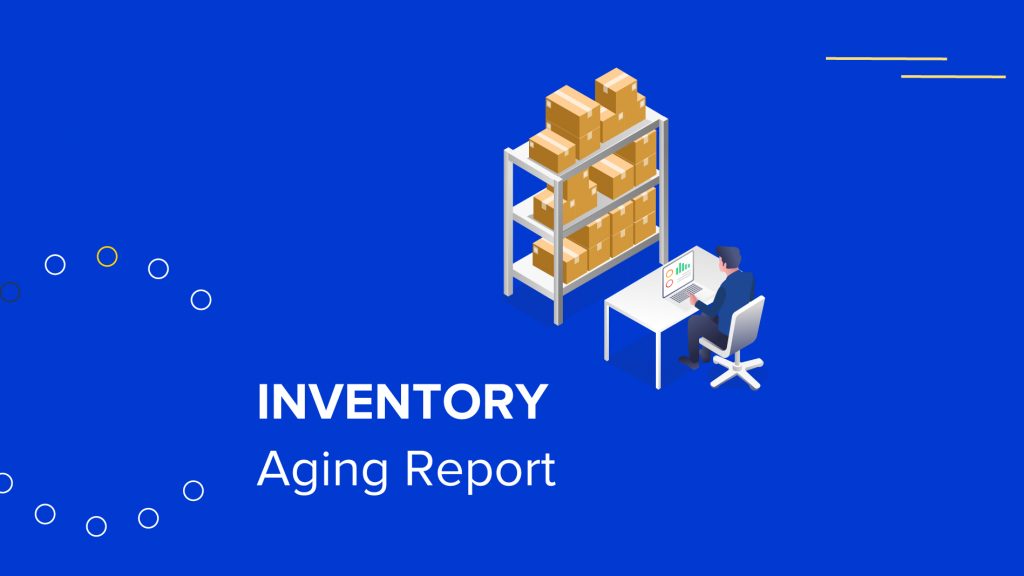When managing your inventory you may encounter issues like inventory aging or running out of sufficient inventory. These two present the excess or the deficit of the inventory needed to carry on your business appropriately. While both of them are hard to deal with, inventory aging is usually harder to manage.

What is inventory aging?
Inventory aging describes a scenario in which your inventory doesn’t sell quickly or sells at a lower price.
Each firm sets its own timeline for qualifying inventory as aging. For example, the firm may choose a period of 3 months, after which it may qualify any unsold inventory as aging.
Why do firms need to fight inventory aging?
Inventory aging is a component part of the inventory management process. It comes with various benefits such as cutting unnecessary warehouse fees, delivering new and fresh products to the customer, making better predictions of the future amounts of needed inventory, etc.
However, it requires consistent effort, calculations, and track. The latter can be achieved effortlessly and efficiently with eSwap. By syncing inventory across multiple warehouses, you can easily keep track of the amount of inventory that you should sell or acquire at your desired time. Quick updates help you have a clear image of how much inventory is being processed on a daily basis. Consequently, this makes the inventory aging calculation and management easier and less time-consuming.
Keep reading to discover more benefits you can achieve by using eSwap to deal with inventory aging.
How to calculate the average age of your inventory?
You will need to calculate the average age of your inventory to estimate the time based on which you will start qualifying your inventory as aging. Therefore, you will first need to calculate the average cost of your inventory:
Average cost of inventory = Cost of goods sold/Ending inventory
You can track your inventory constantly and get the amount of ending inventory easily by using inventory management software like eSwap, which will keep track of your inventory by saving your time and effort. To find out the cost of goods sold, you will need to use the following formula:
COGS = beginning inventory + purchases – ending inventory
After you have your COGS and ending inventory on hand, use the above-written formula to calculate the average cost of inventory.
For the next step of the average inventory age calculation we need to know the inventory turnover ratio. The latter demonstrates the frequency at which inventory has been sold or replaced over a given period of time. Therefore, the higher the inventory ratio, the greater the sales have been throughout the given period. The formula to calculate inventory turnover ratio is the following:
Inventory turnover ratio = Cost of goods sold/Average inventory
Lastly, to find the average age of your inventory, divide the number of days in one year, 365, by the inventory turnover ratio. The number you receive reflects how many days your inventory takes to be sold or replaced.
How to deal with inventory aging?
To handle this issue, software like eSwap has been developed. The system assists you with the necessary on-the-go information you need to be able to make a decision regarding a particular portion of your inventory. Hence, the notifications received through the app provide you with a quick look on the directions towards which the inventory quantity is about to change; the consequences this change will have on the entire chain; the warehouse occupancy levels; etc.
You can also set an alarm to get notified when the stock quantity drops below a certain level. These and similar strategies serve as a way to overcome the possible challenges resulting from inventory aging.
What are the negative consequences of inventory aging?
Alongside with the options available to handle inventory aging, there are multiple adverse consequences you might face.
Your inventory may expire
It is very likely that your inventory has a certain usage limit in terms of time. Especially, if you are supplying food or products that have a food component, you should be even more careful. If your inventory expires, you will not be able to generate any revenue out of it.
Your warehouse will start running out of space
The more aging inventory you have in your warehouse, the less space you will have to store your new inventory. You will need to buy new storage or to reallocate your current inventory to be able to store more inventory. Therefore, the facility costs will increase, which will lead to an increase in your overall production costs.
You will have to mark down your aged inventory
The longer your inventory stays in the warehouse, the harder it will be selling it. Thus, you may want to mark it down and offer it at a lower price than the full retail price. If you are successful enough, you may be able to break even by selling it at the same price you bought it with. However, in most of the cases, aged inventory may result in a loss for the suppliers.
Conclusion
Inventory aging is a problem that is often inevitable, especially for big companies that have many warehouses and large proportions of inventory. It might be hard to keep an accurate track of all the available inventory and predict the investments needed to acquire a new inventory. Hence, tools like eSwap come for assistance if one is having challenging times with already aged inventory or is trying to make predictions about the possible amounts of inventory that is going to age.







